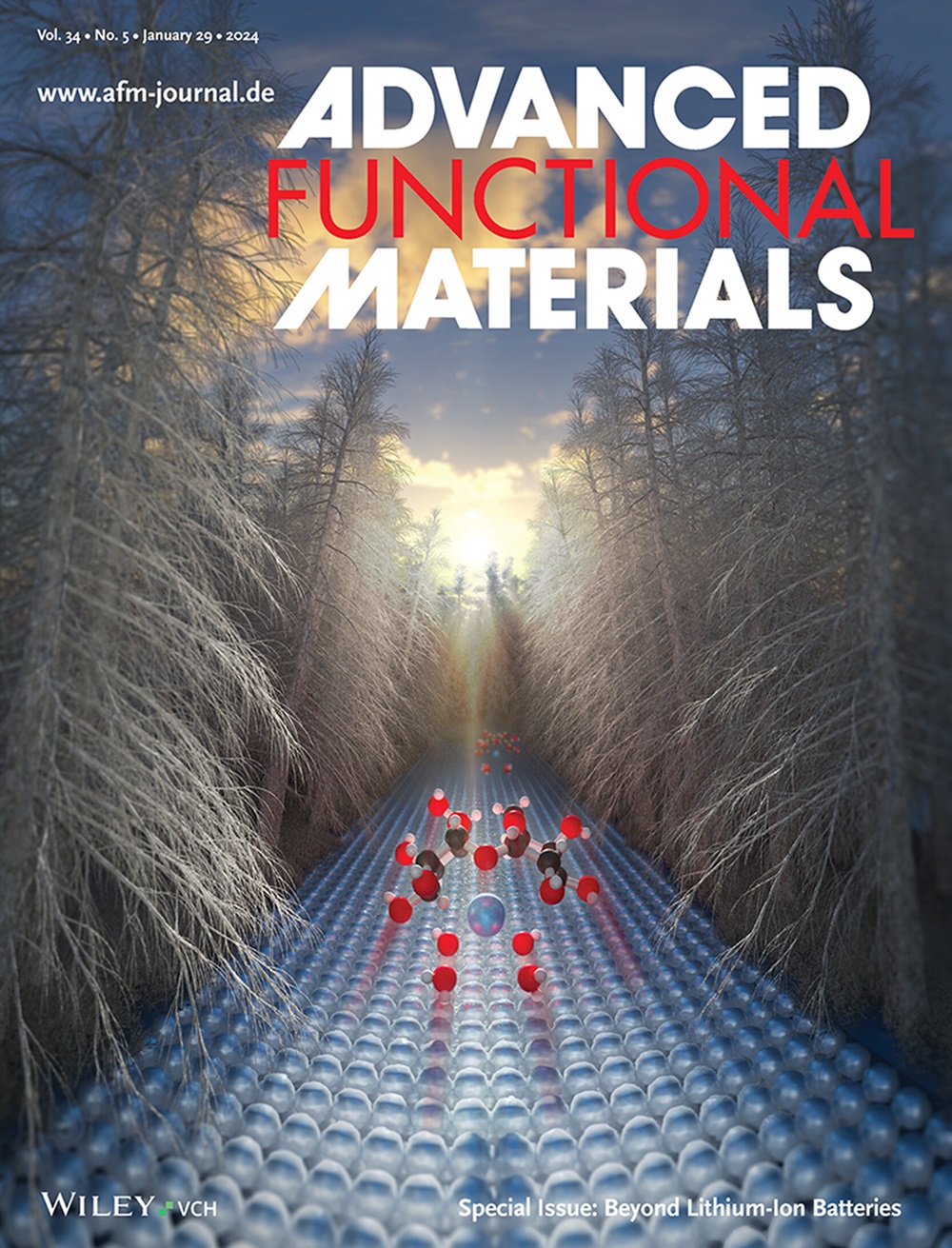SnS2(001)-Reinforced Ion/Molecular Sieving Separator Enables High-Performance Aqueous Zinc-Organic Batteries
IF 18.5
1区 材料科学
Q1 CHEMISTRY, MULTIDISCIPLINARY
引用次数: 0
Abstract
Challenges including dendrite growth on Zn anodes and organic cathode dissolution severely hinder the practical application of aqueous zinc-organic batteries (AZOBs). Herein, a Janus separator engineered by anchoring SnS2(001) nanosheets onto glass fiber (SnS2(001)@GF) to tackle these issues is prsented. The (001) plane orientation of SnS2, compared to the (100) crystal plane, features reduced binding energy with Zn2+ and lower work function, enhancing Zn2+ ion diffusion, creating uniform electric field and ion concentration, and enabling preferential deposition of Zn2+ along the (002) direction with rapid kinetics, while concurrently repelling SO42− ions through electrostatic repulsion. Additionally, the hierarchical stacking properties of SnS2(001) mitigate the shuttling of organic cathodes. With this Janus separator, a robust SEI layer of ZnS, Zn5Sn4, and Zn7Sn4 forms on the Zn surface, further inhibiting Zn dendrites and byproduct formation. The Zn//Zn cell exhibits stable cyclability exceeding 2100 h at 1 mA cm−2 and 1 mAh cm−2. The Zn//bipolar organic molecular cathinone (IDT) full battery achieves stable electrochemical behavior over 2250 cycles at 10 A g−1, with 100% capacity retention after 850 cycles at a mass loading of 17 mg cm−1. Other full batteries utilizing dibenzo[b,i]thianthrene-5,7,12,14–tetraone (DTT) and 5,7,12,14–pentacenetetrone (PT) respectively demonstrate significantly enhanced electrochemical performance.SnS2(001)增强型离子/分子筛分分离器可实现高性能水性锌-有机电池
本文章由计算机程序翻译,如有差异,请以英文原文为准。
求助全文
约1分钟内获得全文
求助全文
来源期刊

Advanced Functional Materials
工程技术-材料科学:综合
CiteScore
29.50
自引率
4.20%
发文量
2086
审稿时长
2.1 months
期刊介绍:
Firmly established as a top-tier materials science journal, Advanced Functional Materials reports breakthrough research in all aspects of materials science, including nanotechnology, chemistry, physics, and biology every week.
Advanced Functional Materials is known for its rapid and fair peer review, quality content, and high impact, making it the first choice of the international materials science community.
 求助内容:
求助内容: 应助结果提醒方式:
应助结果提醒方式:


